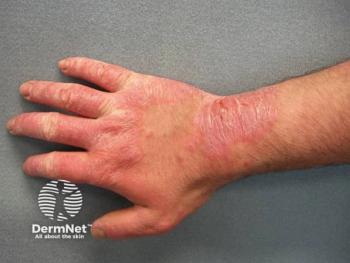
- Dermatology Times, July 2025 (Vol. 46. No. 07)
- Volume 46
- Issue 07
A Million Ways to Get Behind in a Dermatology Clinic
Key Takeaways
- Patient-related delays include unexpected medical events and additional concerns raised during consultations, impacting clinic schedules.
- Academic pursuits, such as teaching moments and case discussions, contribute to delays but enhance clinical knowledge and practice.
Hershel Dobkin, MD, FAAD, shares his experiences and the surprising reasons behind clinic delays, from patient needs to unexpected moments.
It’s 2:30 pm on a Tuesday. The waiting room is full, a slight revolt is afoot, the medical assistants are juggling patient calls and charting, and we are just now seeing the 1:30 pm patient. How did we get here?
Was it due to the patient who had the grand mal seizure during the prebiopsy local anesthesia? The terrified, screaming toddler who didn’t want his warts frozen? Or was it me reminiscing with a patient about my medical mission trip to Peru, where I almost bought a baby sloth for $10 and ate piranha for the first—and only—time?
All of the above are plausible reasons a dermatologist might fall behind in the clinic. Staying on time is always the goal—for pride and professionalism and to avoid an angry waiting room and 0/5 Google reviews. But surprisingly, the root causes of clinic delays have little public awareness. Many patients assume doctors are indifferent to punctuality or, worse, enjoy making them wait. I’m here to bust that myth.
The truth is, life and work happen, and to be human is to be late every now and then. I have thus conjured up this commentary to highlight the many ways clinicians can fall behind, from valid patient needs to academic pursuits to those joyful, unexpected moments that keep burnout at bay. Any clinician should be able to relate to these everyday obstacles.
So, without further ado, here is a select portfolio representing 3 key categories of ways practitioners get behind in clinic: patient, academic, and human related.
Patient-Related Delays
My hand is on the doorknob of the exam room. The skin check has reached its conclusion, and from behind me I hear, “But I forgot to mention my hair is falling out….”
Or, as I’m concluding a visit, a carefully handwritten list of 20 to 30 concerns slowly emerges. This list is one that every dermatologist is intimately familiar with. Ironically, it is often full of questions about areas we have already examined, but with highly personal details.
Then there was the time I began to inject local anesthesia with lidocaine for a routine shave biopsy on the abdomen of a 20-something-year-old man. Suddenly, I noticed a full-body stiffness in my periphery, followed by limb twitching, grunting, and unresponsive pupillary dilation. Ladies and gentlemen, we were witnessing a grand mal seizure. Luckily, this wasn’t my first experience with seizures; I gently rolled the patient onto his side and monitored him until the paramedics came to save the day.
Once, while I was discussing my riveting plans for an around-the-world cruise during a skin cancer excision on the forearm of a charming 80-year-old woman, a not-so-pleasant surprise presented itself. A fountain of venous blood briefly arose out of the surgical site, signifying that a small but stubborn blood vessel had been “nicked” in the process, further facilitated by the patient’s anticoagulant therapy. Cue the surgical poker face: Just like any surgeon, the “skin surgeon” had to remain cool as a cucumber and continue the cruise ship conversation while finding a way to stop the intraoperative bleed. After some prayer, electrodessication, and a figure-of-8 vessel suture, all was well. I learned how treacherous the Drake Passage is on a cruise ship, and I was on my way, albeit a bit behind schedule.
Smile and make no sudden movements—that was my inner monologue as I approached a visibly apprehensive toddler with a recalcitrant wart on his foot. I would rely on my previous training (watching Steve Irwin perfectly wrangle crocodiles via slow, nonthreatening approaches) to calmly handle the fearful toddler before a procedure. Nonetheless, the training failed, and a symphony of screams engulfed the office before any liquid nitrogen was blasted. In the end, reassurance, wart cream, and a lollipop saved the day.
Academic Delays
Between patients, I ran into a dermatology resident in the hallway. I couldn’t help but bestow upon him a relevant but nonconfrontational teaching opportunity. The classic pityriasiform differential in the papulosquamous category arrived via a unique case in a middle-aged woman. Although the case turned out to be garden variety pityriasis rosea, the resident will surely never forget to consider the notorious syphilis in this differential.
At a later date, my dermatopathologist, affectionately nicknamed “Dr Dyskeratosis,” called me out of the blue with an update on a unique case. Due to the rarity of discussing cases with dermatopathologists in or outside the clinic after residency, I naturally stopped everything and gave him my undivided attention. Dr Dyskeratosis inquired about a few key aspects of the patient’s full history and whether he could see clinical photos, which I happily accommodated in a manner compliant with the Health Insurance Portability and Accountability Act. If I had learned anything in residency, it was that bad biopsies make bad results, and good biopsies and communication lead to more accurate diagnoses.
Human Delays
“Dr Dobkin, is that you in full X-Men Magneto cosplay in that picture on the wall?” asked the patient who didn’t know I cosplay in my free time and that I am more than willing to discuss X-Men backstories at length and why Magneto is the best antihero of all time. “Is that Hayden Christensen/Darth Vader Force choking you in that picture as well?” Yes, unidentified patient, yes, it is.
“Dr Dobkin, what were you doing in Peru?” asked the curious patient, pointing at a photo of me on a medical mission trip to the Peruvian Amazon in medical school. Naturally, I elaborated. It was June 2015, a humid summer day on the river, my long hair freshly free from its man bun. We had just run out of chicken, so newly caught piranha was on the menu. Having below-shoulder-length hair was questionable for me as an aspiring physician, and also due to the added heat it radiated in such a tropical climate. My biggest (controversial) regret from that trip? Not paying $10 for the cute baby sloth that a kind Amazonian villager offered me. I ran scenarios in my head about how to smuggle a sloth through US customs: Perhaps it could be a service animal for an anxious medical student.
Finally, the highlight of the week, awaiting me in the next exam room: a 120-lb cloud-like ball of good vibes in the form of a Bernese Mountain Dog. For a moment, I had half a mind to tell the front desk to cancel the rest of the afternoon so we could play, but alas, work must proceed. I did ask special permission from the patient to engage with the pup, which was graciously granted. “Bernie,” well-trained service animal that he was, never lost eye contact with his owner/friend after some head scratches and an attempt at fetch with a small skin cream sample tube.
So there you have it––the various ways we can all get behind in the clinic. Tell your friends, your patients, and other doctors that we’re human. We like to learn and enjoy our time with patients, and although we strive for punctuality, stuff happens.
Hershel Dobkin, MD, is a board-certified dermatologist in Bexley, Ohio, specializing in both medical and surgical dermatology.
Want to read more from Dobkin? Find more of his work
Articles in this issue
5 months ago
Dermatology Times July 2025 Print Recap5 months ago
Is AI Transforming Skin Care?5 months ago
The Value of RAD, According to Clinicians5 months ago
A New Canvas for Conversations in DermatologyNewsletter
Like what you’re reading? Subscribe to Dermatology Times for weekly updates on therapies, innovations, and real-world practice tips.



















